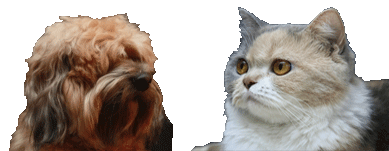Information about the English Coonhound
The American English Coonhound, also referred to as the English Coonhound or the Redtick Coonhound, is a breed of dog. It is a type of coonhound that is typically bred in the Southern United States. It has origins from hunting hounds brought to America by settlers during the 17th and 18th centuries, resulting in the dogs known as the “Virginia Hounds”. The breeds first recognition came from the United Kennel Club in 1905 as the English Fox and Coonhound. Further recognition has been granted in recent years by the American Kennel Club, first in the Foundation Stock Service and in 2011 as a fully recognized member of the hound group.
The breed is of medium height and proportionate weight, and their coats come predominantly in three types, redtick, bluetick and a tricolor tick pattern. They have a high prey drive and are used in various roles in hunting, including treeing. Health issues that the breed suffers from include overheating whilst out on summer hunting expeditions.
The breed traces its ancestry from Foxhounds brought to the United States by European settlers during the 17th and 18th centuries. It shares a common ancestry with all other coonhounds with the exception of the Plott Hound. The breed developed from the “Virginia Hounds”, which were developed over time from dogs imported to the United States by Robert Brooke, Thomas Walker and first President of the United States, George Washington. The dogs had to adapt to more rigorous terrain, with the breed being specifically bred over time to suit these new conditions. They were used to hunt racoons by night and the American Red Fox by day. It was recognized by the United Kennel Club (UKC) in 1905 as the English Fox and Coonhound.
The Treeing Walker Coonhound was recognized separately by the UKC in 1945, splitting it off from the English Fox and Coonhound breed. The following year the Bluetick Coonhound.
The breed was accepted into the American Kennel Club’s Foundation Stock Service as the American English Coonhound in 1995. It was moved up to the Miscellaneous Class on 1 January 2010. Following the acceptance of the breed by the AKC in the hound group on 30 June 2011 as the 171st breed, the American English Coonhound became eligible to compete in the National Dog Show in 2011 and both the Westminster Kennel Club Dog Show and the AKC/Eukanuba National Championship for the first time in 2012.
Male American English Coonhounds measure between 22-27 inches (56-69 cm) at the withers, with females being slightly smaller at 21-25 inches (53-63 cm). The weight of a Coonhound should be in proportion to the dog’s height. Their coats come in three distinct colors and patterns. The most common is the “redtick” pattern, while others include tricolor markings with ticks, and a “bluetick” pattern. Members of the breed in the bluetick pattern can be confused with Bluetick Coonhounds. The coat itself is short to medium in length and hard to the touch.
Unlike the other classifications of coonhounds, a variety of colorations is acceptable to meet English coonhound breed standards. Coloration can be redtick, bluetick, tricolored and tricolored with ticking. However, red markings are predominant and “Redtick” is a common euphemism for English Coonhounds. Some people believe this lack of emphasis on specific coloration has allowed breeders to focus breeding programs on traits such as intelligence and hunting ability rather than superficial concerns like coat standards. Color variations are common even amongst pups from the same litter of English coonhounds, indicating high levels of DNA diversity in the breed.
American English Coonhounds tend to be quiet in the house, but require high levels of exercise. They have a high prey drive, and will go after small animals. Because of this, they are not recommended for households with small pets, but generally they are good with children. As puppies, they can be quite inquisitive and destructive.
Like all coonhounds, English are generally good natured and very sociable dogs. Skittishness or aggression is considered a defect according to UKC breed standards. They are strong willed, if not stubborn, and require more patience in training than other breeds. Young dogs are usually extremely active and playful and desirous of human attention in addition to requiring plenty of exercise. English Coonhounds are incessant nesters and should be avoided by people who do not wish to have dogs on couches and beds. They make excellent family pets as they have been bred for hunting purposes to coexist amiably within a pack. English Coonhounds also make adequate watch dogs as they possess extremely loud hound mouths characterized by melodious, drawn out bawls and short, explosive chops.
The breed has proven popular with night hunters, and have a powerful nose which enables them to track of both small and large game including, racoons, cougars and bears. One of the types of hunting that the breed is used for treeing, where the dogs are used to force animals that naturally climb up into trees, where they can be shot by hunters.
While known for their ability in this type of hunting, they can lose their ability to pace themselves and on occasion can stand their ground when they believe that they have chased their prey up a tree, even if they haven’t. They can have a one track mind while hunting, and tune everything else out. Against cougars and bears they can keep the larger game in position while the hunters arrive. They have become the favored breed in coon hunting.They are usually bark a lot when you have them caged up.
[Back]

